
After Hurricane Harvey, TeamSupport CEO Robert C. Johnson answered a call for help.
Feb. 19, 2018
In August 2017, Robert C. Johnson watched with the rest of America, as a weakening tropical storm changed direction and gathered intensity. Not until Friday, Aug. 25, did it become clear that the first Category 4 hurricane in 12 years would make landfall in the United States. Hours later, Hurricane Harvey hit the coast of Texas.
Over that weekend, Johnson checked the pilot message boards from his home in Dallas, while Harvey dumped more rain than any storm in U.S. history, causing catastrophic flooding from Corpus Christi to Beaumont. Tens of thousands of Texans were displaced.
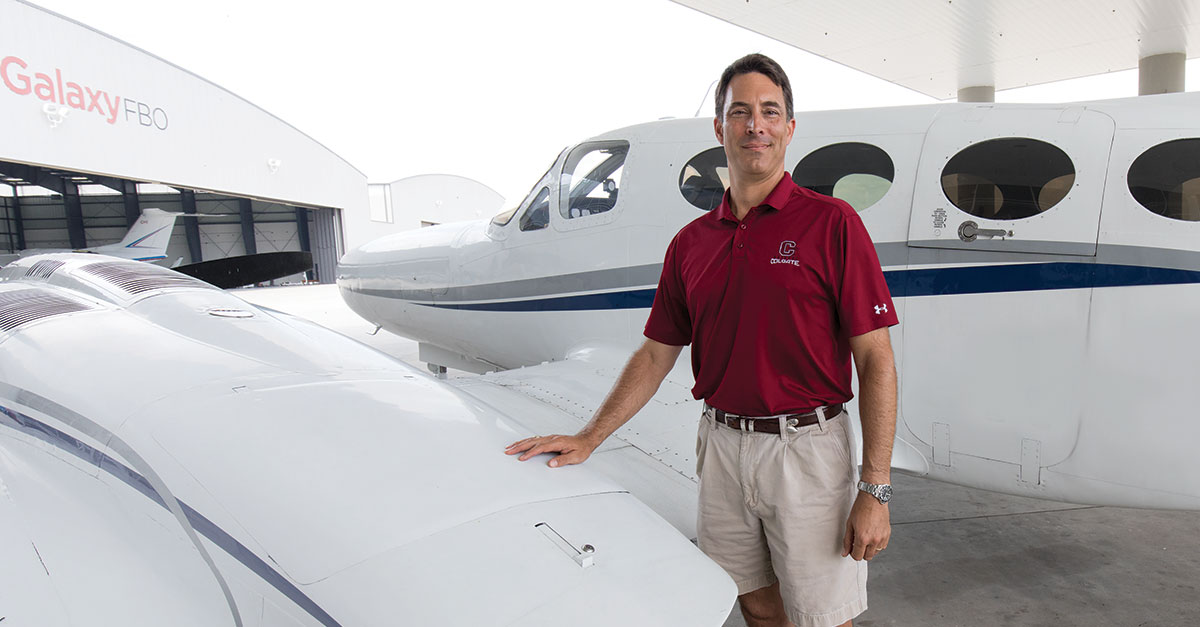
On Monday, Aug. 28, a friend of Johnson’s posted on Facebook, calling fellow pilots to converge at Conroe-North Houston Regional Airport with supplies requested by the Salvation Army and other relief groups. When the winds subsided enough to fly safely into Conroe, Johnson loaded up his Cessna 421 and took off from his home base of Addison Airport bound for Conroe.
“We had at least 60 airplanes, from pistons to jets, flying supplies into Conroe,” said Johnson, who by day is the CEO of TeamSupport, an enterprise software startup. This was the beginning of Operation Airdrop, a group that coordinated the movement of 250,000 pounds of supplies in response to Harvey.
Over five days, Johnson flew 15 legs between Addison and Conroe, Houston’s Ellington Field, West Houston Airport and Beaumont in support of Operation Airdrop.
The general aviation relief network Sky Hope set up an emergency supply depot at Georgetown Municipal Airport near Austin. Johnson would land at Georgetown, load his Cessna 421 full of supplies, fly to an area where relief groups were waiting, fly back to Georgetown, load up again, and fly a second mission the same day.
“We had at least 60 airplanes, from very small pistons to larger jets, flying supplies into Conroe. It was just a group of people rallying in support of their community.”
“We ended up having a couple hundred pilots flying missions all over Texas,” said Johnson. “With business airplanes and private airplanes, we were able to move about a quarter million pounds of supplies quickly in a time of need.”
CLIENT AND COLLEGE TRIPS
Johnson normally flies his Cessna 421 to meet with existing and prospective clients. He has flown wounded veterans for Veterans Airlift Command, but he had never been involved in this type of disaster-relief flying before. Johnson co-founded the company in 2008. TeamSupport provides customer support software for business-to-business clients.
Now, the company has 40 employees and a global presence. In addition to the Dallas headquarters, TeamSupport has an office in Denver and another in Cape Town, South Africa.
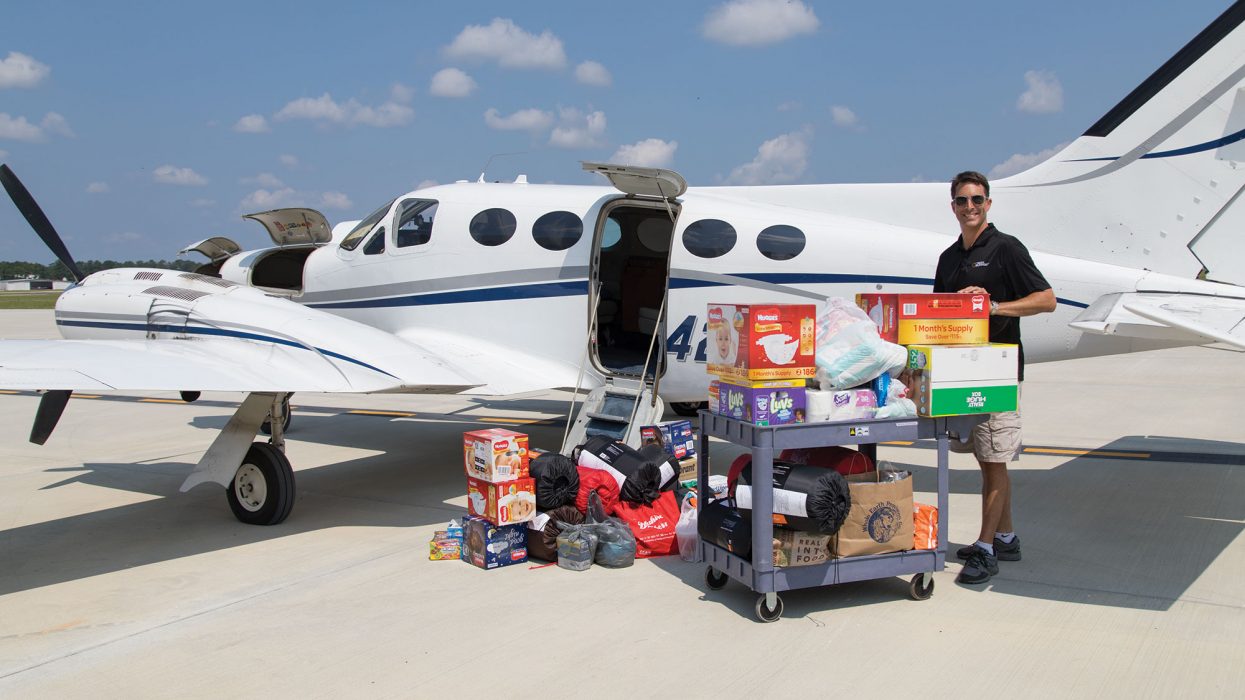
“Our clients tend to have lower volume, higher complexity issues than companies in the business-to-consumer space,” said Johnson. “We understand how important it is for them to support their customers.”
That means frequent travel. Johnson flies over 130 hours a year for the business, almost always visiting multiple clients in one swing. “The airplane’s a great tool to visit a number of clients in a short time,” he said. He often flies solo, but on many client trips, members of the sales, software development or marketing teams will go along.
Of course, when the trip calls for it, TeamSupport’s people will fly on the airlines. Trips to the West Coast or New York are beyond the range of Johnson’s Cessna 421.
“If I’m going to New York for the day, it’s easier to fly [the airlines] nonstop from Dallas to LaGuardia,” said Johnson. But for trips to Denver, Chicago, Atlanta and Charlotte, the piston twin is always faster and more efficient.
Johnson is also on the board of trustees for Colgate University, in upstate New York. The nearest commercial airport is in Syracuse, an hour’s drive away. Even though Colgate’s nearby general aviation airport is beyond the range of a single leg in the Cessna 421, it’s still faster for Johnson to fly himself, making one stop enroute.
“I’m well aware that if I fly four hours to a meeting, then spend six hours with a client and need to fly four hours back that evening, that’s a long day. In those cases, I’ll take another pilot with me.”
“When I fly up there, I plan my stops to do TeamSupport business along the way,” said Johnson. “Once I get out of the office, it’s easier to stay on the road. It’s not uncommon that I’ll stop in three or four cities before and after a trip to Colgate.”
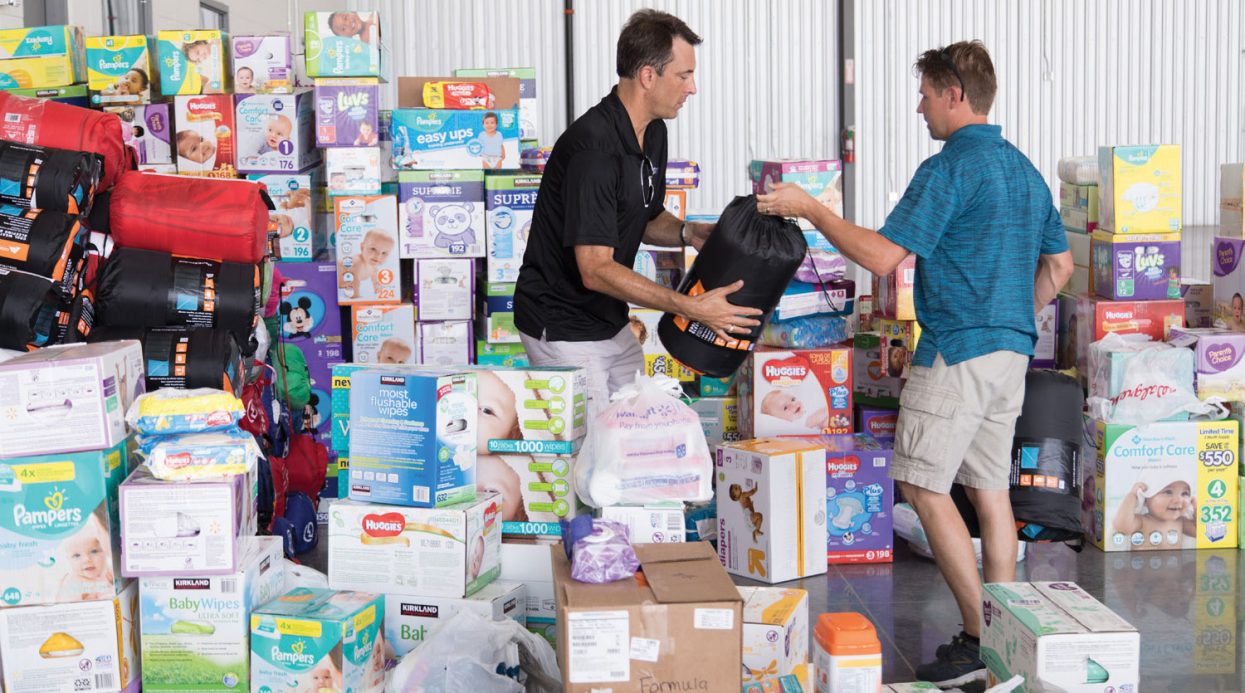
Because showing prospective clients the TeamSupport product in person is so important, Johnson feels flying to support his business is essential. “I’ve closed a lot of business [deals] because I was able to fly out there and get in front of a client,” he said.
PILOT FRIENDS
As someone who flies a lot of long solo missions, Johnson takes single-pilot safety seriously. He understands how risks from weather, fatigue and unfamiliar airports can affect safety. One of his most effective safety tools is schedule flexibility. “If the weather is not looking good, I can fly the day before or after I was scheduled,” he said, “or choose to fly into a different airport.”
On longer days, such as the those with multiple legs, Johnson will invite a pilot who’s also a trusted friend to fly along in the right seat. Many of these friends are also certified flight instructors Johnson knows through his recurrent training or the community at Addison.
“I’m well aware that if I fly four hours to a meeting, then spend six hours with a client and need to fly four hours back that evening, that’s a long day,” said Johnson. “In those cases, I’ll take another pilot with me, just to have another set of eyes.”
In fact, Johnson brought a trusted pilot with him on several Hurricane Harvey relief flights. Not because the legs were long, but because the multi-stop days also included time on the ground, loading and unloading supplies.
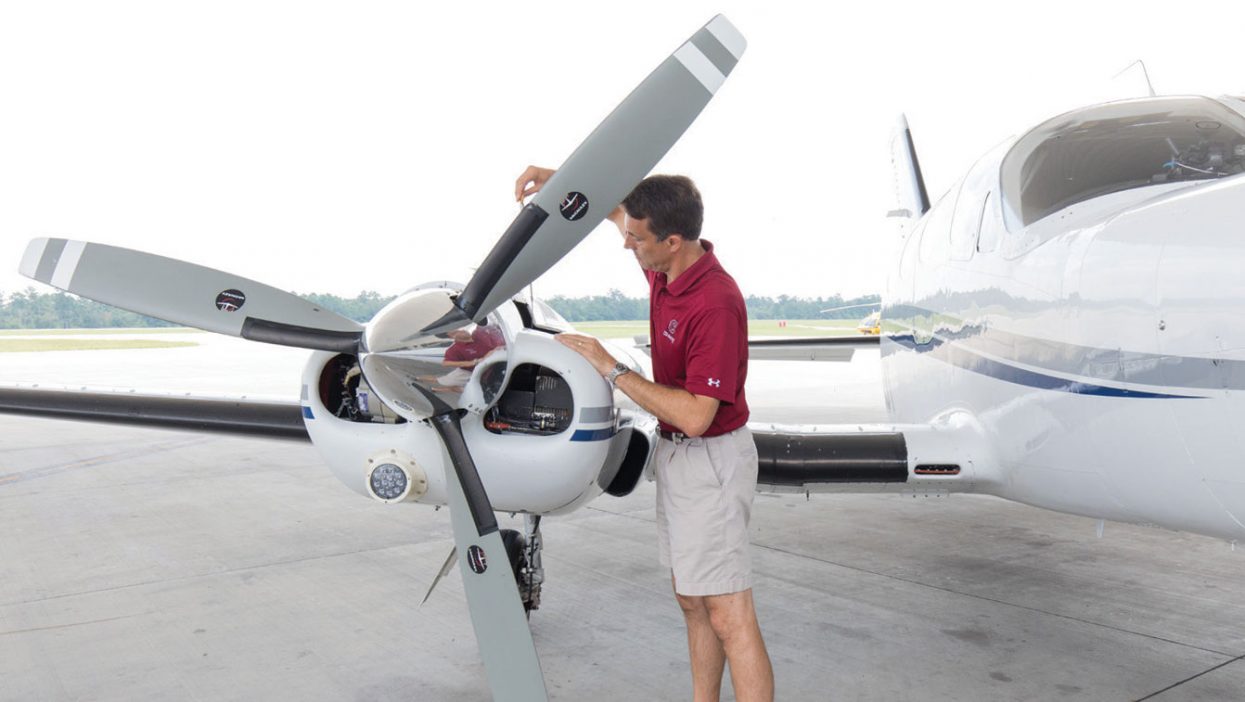
CRITICAL CARGO
On one relief mission in September 2017, the impact of his efforts hit home.
“I had flown to Georgetown to pick up supplies for the Coast Guard, then dropped them off in Ellington,” he recalled. “Then I flew back to Georgetown to load up again.” Johnson’s Cessna 421 was loaded “to the gills” when a Sky Hope coordinator ran up to him.
“Stop! Stop!” she called out. “Can you unload your airplane for me?”
“I just loaded it,” Robert told her. “We’re ready to go.”
“I have an emergency flight for you,” she said. “We need to get four refrigerators to Hawthorne.”
Road access to Hawthorne, a small town west of Beaumont that had been hit hard by the hurricane, was cut off. A clinic in Hawthorne had lost its medical refrigerators in the storm and was expecting to receive medicine that afternoon.
“So, we loaded four refrigerators in the back of my airplane, plus medical supplies.”
Learn more about TeamSupport at www.teamsupport.com.
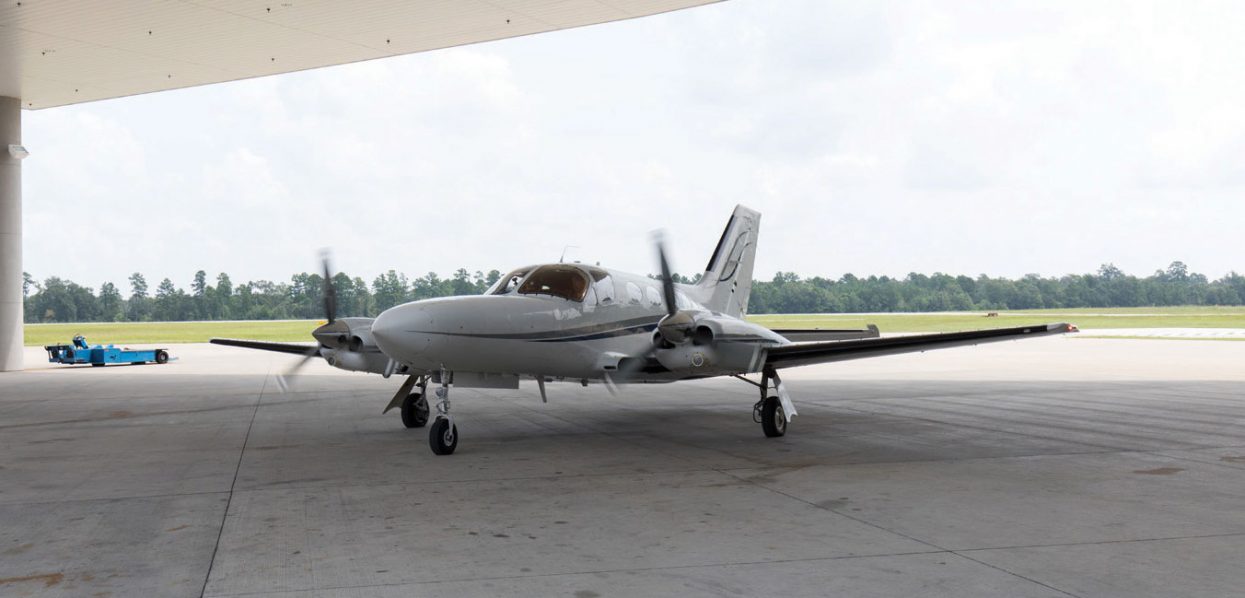
SAFETY RESOURCES FROM TYPE CLUBS
As an owner-operator, Robert C. Johnson looks to the pilot community for resources to sharpen his skills and safety awareness. Since he bought his Cessna 421 Golden Eagle in 2011, he’s been a member of the Twin Cessna Flyer organization.
“When you buy a new airplane, there’s a huge learning curve, and the type clubs have an immense wealth of knowledge,” said Johnson. “All the different type clubs do a great job educating their membership about maintenance, how to fly more safely, the mechanics of the airframe, and every other area.”
Johnson attends the Twin Cessna Flyers’ annual convention, reads (and writes for) the club’s magazine, and participates in online discussion boards.
“They have a three-day seminar where they teach all the systems of the airplane, and they put out a flight risk assessment tool for the twin Cessna fleet,” he said. “There have been studies showing that if you’re a member of a type club, you’re less likely to have an accident.”
Snapshot: TeamSupport
Base:
Addison Airport near Dallas, TX
Aircraft:
One Cessna 421 Golden Eagle
Personnel:
Johnson is the owner/operator and primary pilot


 International Business Aviation Council Ltd.
International Business Aviation Council Ltd.